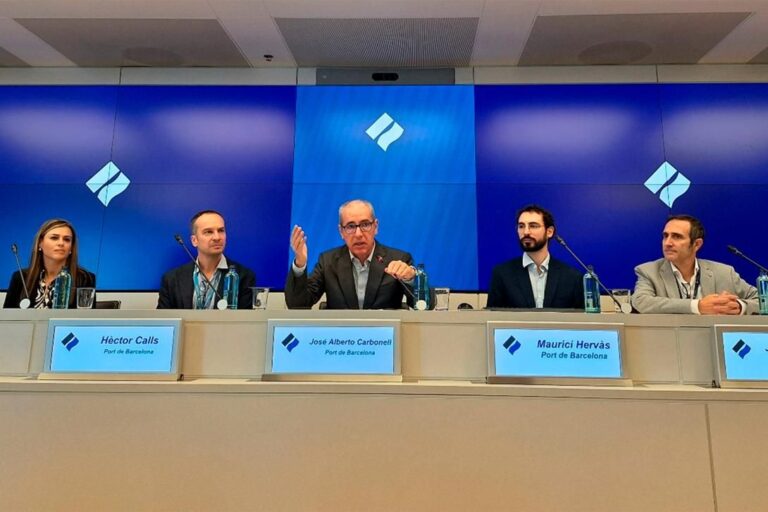The Port of Barcelona has become the first port in the Mediterranean and one of the first in the world to use ISO 14064 to calculate the carbon footprint of all
The Port of Barcelona has become the first port in the Mediterranean and one of the first in the world to use ISO 14064 to calculate the carbon footprint of all activities carried out in the port territory.

As disclosed, the first calculation of this footprint, corresponding to the year 2022 and certified by classification society DNV, has been 495,356 tCO2eq, of which 349,399 tCO2eq correspond to the activities that were previously included in the port’s carbon footprint and 145,957 tCO2eq come from the new activities incorporated, such as industry, port works and ship waste.
Specifically, in this first study, the greenhouse gas emissions of the following categories have been calculated:
- Ships: the main contributor, with 64% of emissions: entering and leaving the port, staying at the docks and anchoring.
- Port concessions and others: contributing 29% of emissions, including terminals, logistics warehouses, industrial activities, port services and the Port Vell concessions.
- Construction and waste: these represent 4% of emissions and include the production and transport of construction materials and the consumption of machinery used in port works, as well as the management of MARPOL waste from ships.
- Land mobility: these represent 3% of total emissions, coming from the daily entry of industrial trucks and tractors, as well as from passenger cars and trains operating within the port.
Note that, according to the Port of Barcelona, the carbon footprint certified by DNV according to the ISO 14064 standard guarantees that the calculation process has been carried out following international standards, thus ensuring the reliability of the data and its comparability in future years.
Hèctor Calls, Director of Environmental Sustainability and Energy Transition at the Port of Barcelona, linked the certification of the carbon footprint with the port’s ‘Energy Transition Plan’ that will be published in 2025:
“The carbon footprint represents a key tool for defining this Plan, which establishes the strategies to transform the Port of Barcelona into a sustainable energy hub, and increases its resilience, competitiveness and attractiveness for users and customers. The identification of emission sources and their quantification not only allows us to have a clear idea of the current situation, but also makes it possible to identify the areas of intervention and the establishment of specific strategies to reduce emissions in each of them.”
Reportedly, the ‘Energy Transition Plan’ includes, among other measures, the promotion of sustainable fuels and intermodality or the electrification of transport, which are said to be necessary to contribute to the decarbonization of the logistics chain on a global scale.
“Our ambition goes beyond the emissions generated within the port. We want to facilitate the use of clean fuels that reduce the environmental impact of maritime transport on a global scale,” Calls stressed.
José Alberto Carbonell, President of the Port of Barcelona, said the study of the carbon footprint of the port, which will be carried out annually, “will allow us to monitor the degree of effectiveness of the measures we implement within our Energy Transition Plan, such as the Nexigen project for the electrification of tongs.”
It is worth mentioning that in 2024, the Port of Barcelona launched its first onshore power supply (OPS) system at Hutchison Ports BEST container terminal. This equipment, which is said to be the first in a container terminal in a Mediterranean port, makes it possible to supply ships with 100% renewable-origin electricity so that they can turn off their engines while in the Port of Barcelona and thus reduce their emissions.
“In Barcelona we have taken on the commitment to become carbon-neutral by 2030. The challenge is enormous, and we must all share the responsibility and do everything we can to reduce emissions. This OPS system is a very good example of what happens when the goal is clear and shared. Today’s news is historic. And precisely for that reason it cannot be a one-off. Barcelona needs to be the port with most terminals of these characteristics,” Laia Bonet, First Deputy Mayor of Barcelona City Council, remarked.
Related Article
Content Original Link:
" target="_blank">

























































